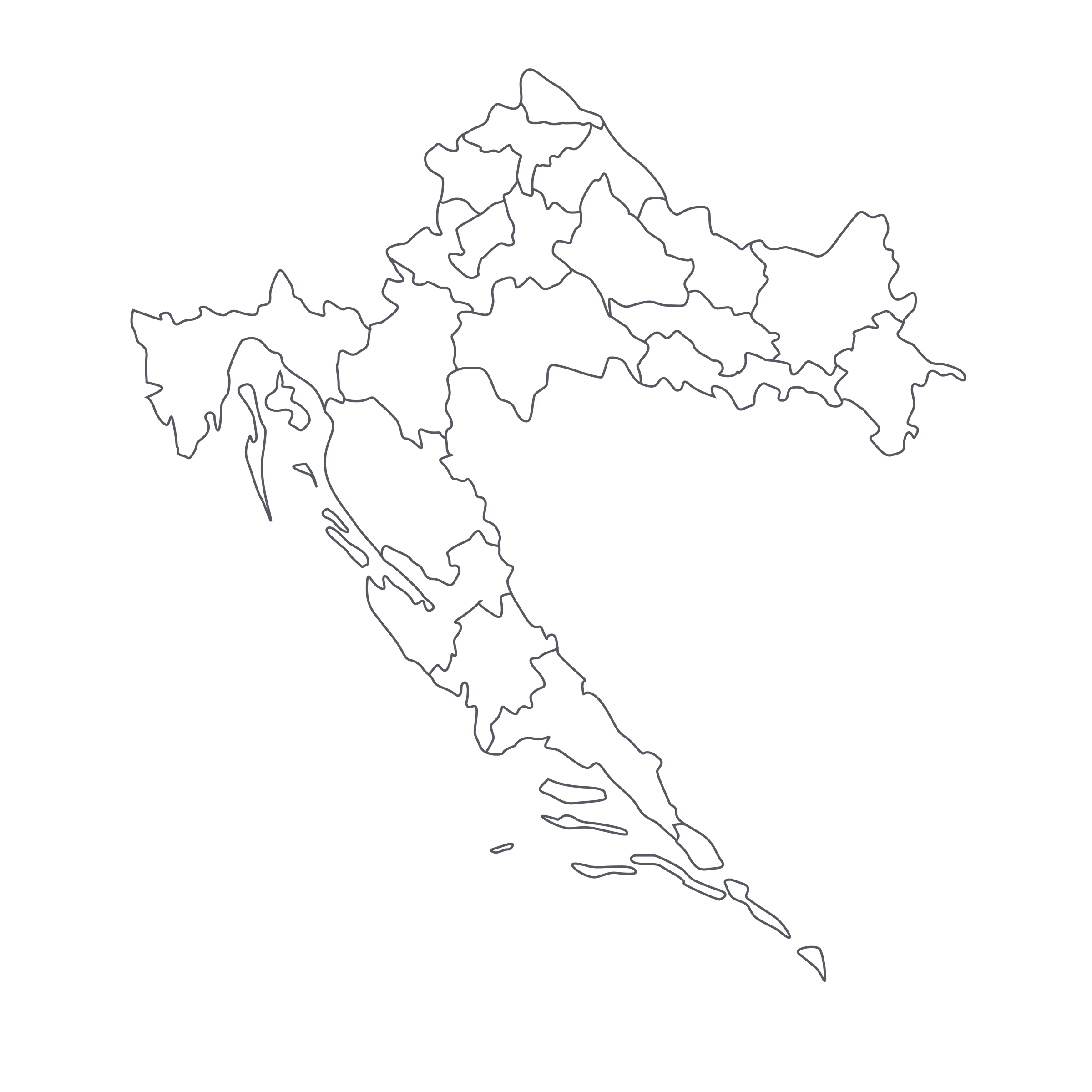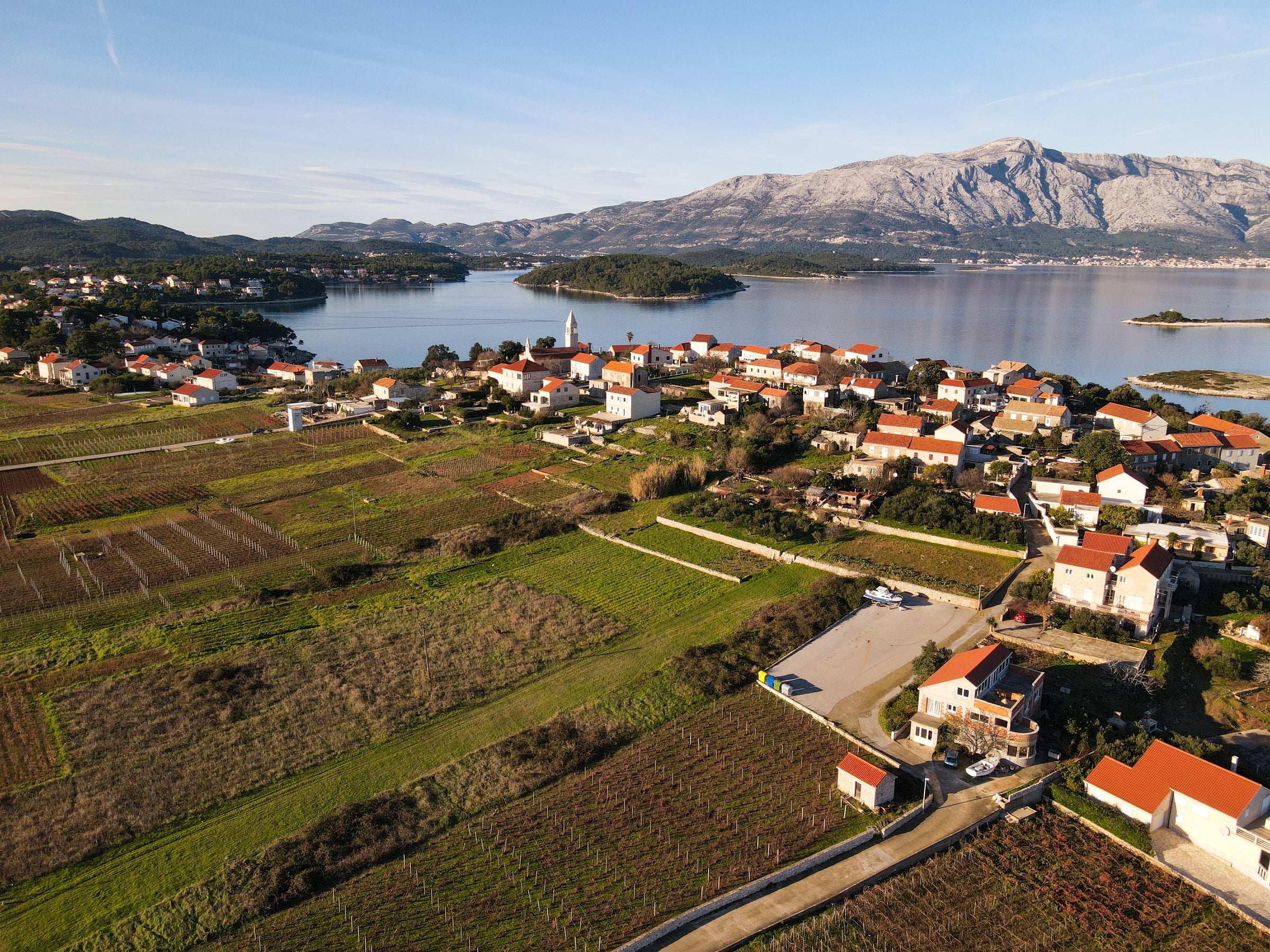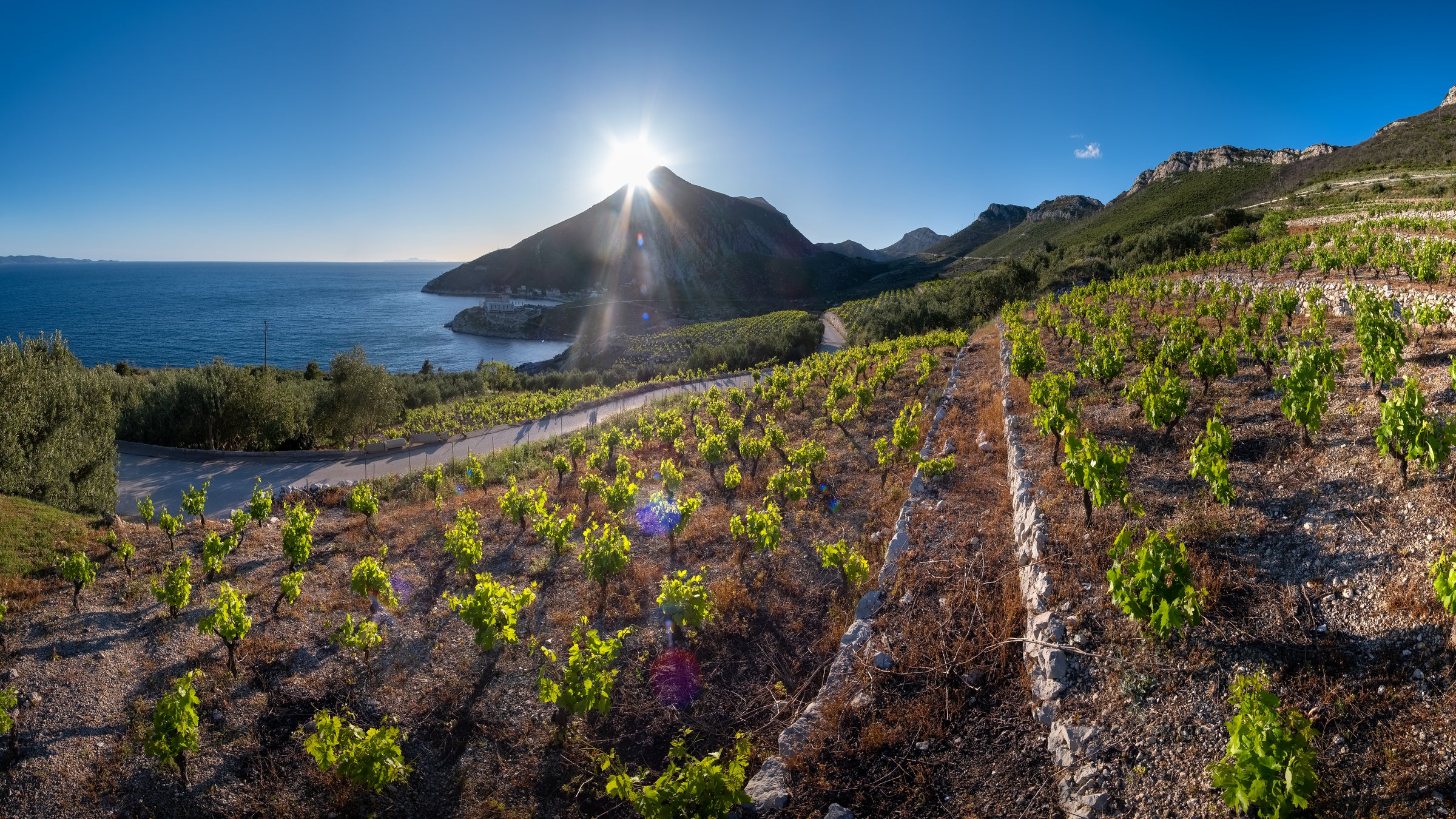As you may have seen, the SommSelect team is “on tour” this Fall with the
USA Today Wine & Food Experience, where we’ve been hosting a tasting seminar called “Drink Like a Somm.” We’ve also launched a new monthly club with the same theme—namely, a look at which wines sommeliers are most excited about right now. Today’s wine, from a tiny island off the coast of Croatia, is a “sommelier wine” if there ever was one: It’s uniquely delicious, requires some map study, and is compelling evidence of an ancient wine culture reborn.
Let’s focus, for the moment, on the “delicious” part: Forget the unfamiliar language and grape—the native Pošip (poe-ship)—and focus on the racy, aromatic, slightly saline personality of this Adriatic white. It wouldn’t be at all out of place across the way in Italy, or further south in Greece, and had things worked out differently for Croatia in the post-WWII era, who’s to say there wouldn’t already be legions of Pošip fans here in the States, as there are for Vermentino, or Assyrtiko. And, believe it or not, this is the second appearance of this wine on SommSelect: The 2017 vintage met with such an enthusiastic reception that we were eager to try the new release—and were not disappointed! Drinking like a sommelier is all about open-mindedness and adventure, but the wine needs to be objectively delicious, too—Toreta has hit all the marks with this 2018, so it’s time to change lanes and try something new!
Pošip is the signature white grape of Korčula (core-chula), which is about halfway between Dubrovnik and Split on Croatia’s long slice of Adriatic coast. As we’ve mentioned before, Croatia is one of the most exciting “emerging markets” in the wine world, even though it is one of the world’s ancient winemaking cultures. There have been many obstacles to great winemaking in the modern era, including 50 years of communism and the devastating wars of the 1990s, so you might say Croatia’s in a “rebuilding mode.” The Toreta winery is a prime example.
Proprietor Frano Banicević only made his first wines in 2013 (albeit with copious notes about the vineyards and winemaking left by his great-grandfather). He has committed himself to Pošip, an exotically aromatic white with great acidity and a light touch of Adriatic salinity. If you saw it on a shelf you’d probably pass it by, given its unfamiliarity, but that’s why we’re here—to wave uniquely delicious wines like this in your face and urge you to taste them. Think of a dry German Riesling crossed with a coastal white from Italy or Greece and you’ve got this 2018 Pošip close to figured out: The combination of palate-coating texture and mouthwatering acidity is on par with that of other top-performing “island” whites from around the world. Pošip is naturally high in sugar but also has great acidity: as with German Riesling, even fully dry styles of Pošip, like this one, give off what I’d call a suggestion of sweetness as opposed to actual sweetness. Anyone who’s tried Kabinett Trocken from the Mosel knows what I’m talking about, and while I’d characterize Pošip as more floral, herbal, and saline than Riesling, its texture and white peach fruitiness are somewhat Riesling-esque.
Korčula was part of the Venetian empire until the early 1800s, and its cuisine and culture still feature many nods to that era. Wind-swept, arid, and lushly forested, the island contained thousands of hectares of vineyards in pre-phylloxera times, but these days there are roughly 450 hectares, 70% of which are white grapes (mostly Pošip). The soils contain lots of iron, giving them a reddish cast like those of the Istrian peninsula further north. Frano farms just five hectares of vines that overlook the Adriatic in the small village of Smokvica, favoring locations where the vines are protected from sometimes-harsh winds.
Toreta’s 2018 (the name
toreta refers to ancient, cone-shaped stone shelters found on the island) was fermented and aged only in stainless steel, and, like the ’17 before it shows tremendous freshness and nerve: In the glass, it’s a bright yellow-gold extending to the rim, with an assertively aromatic nose of yellow peach, mango, meyer lemon, white flowers, wild herbs, and a hint of sea spray. While lifted by bright, lip-smacking acidity, this wine has some sneaky density to it: it’s more lushly textured than you might have expected, and well-structured as opposed to flabby. It stays just on the shy side of tropical and finishes with an herbal, mineral twang that beautifully counterbalances the fruit. I could see it aging nicely for 5+ years, but there’s no reason to wait: Pull the cork about 15 minutes before service at 45-50 degrees in all-purpose white wine stems. Adriatic seafood gets the call here, be it a whole roasted branzino on the grill or a classic
brodetto di pesce with lots of aromatics (and maybe a little chile heat, which this wine is perfectly equipped to handle). I’m assuming, of course, that you haven’t already booked a trip to the Dalmatian Coast to see this all for yourself. Either way, enjoy!




